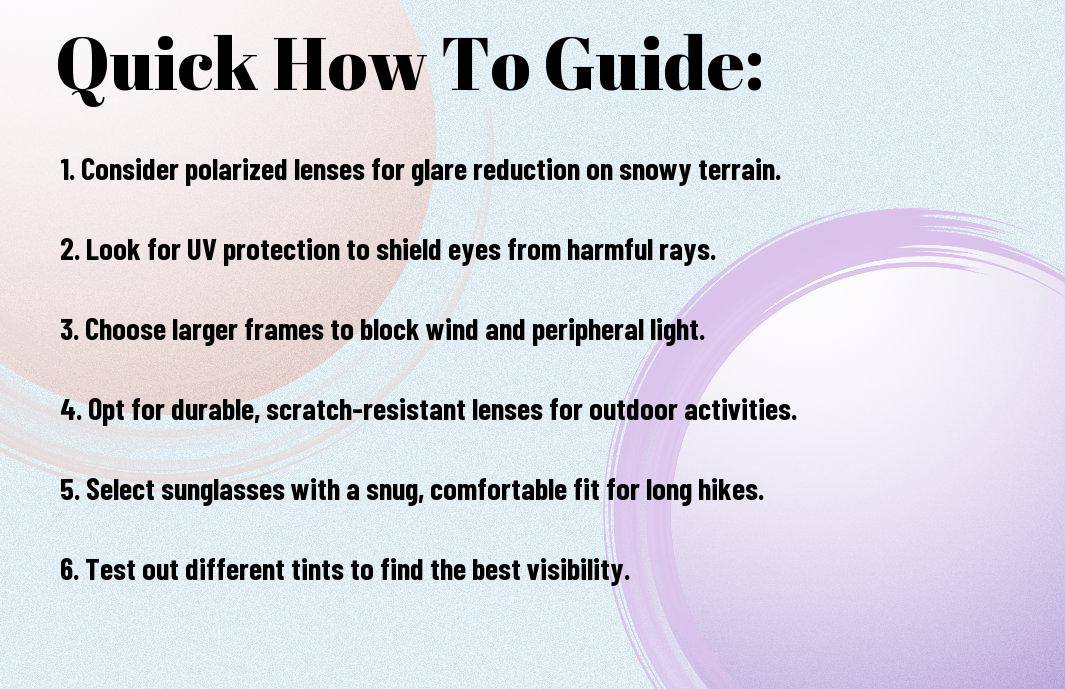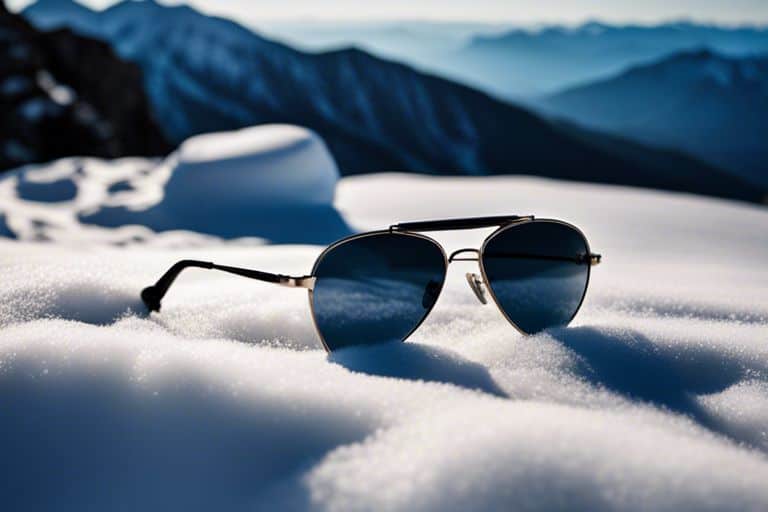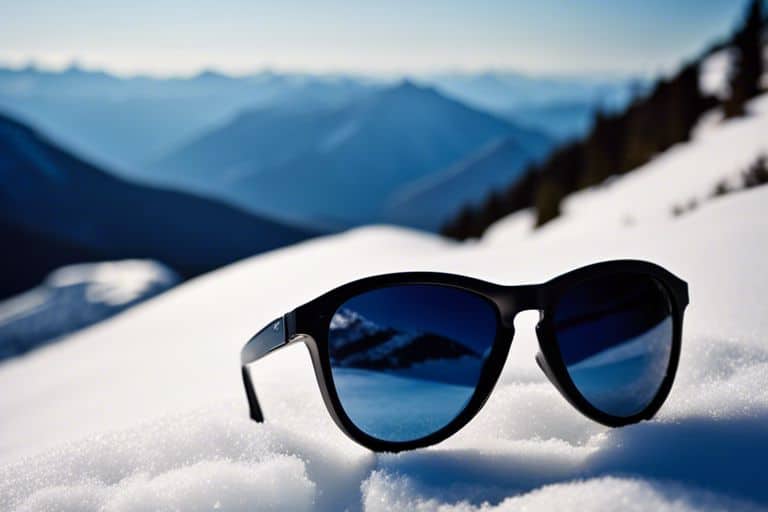When it comes to winter hiking, protecting your eyes from the sun’s harmful rays and other potential hazards is crucial. Choosing the right sunglasses for winter hiking can make a significant difference in your outdoor experience. Whether you’re trekking through snowy mountain trails or exploring icy landscapes, having the appropriate eyewear can enhance visibility, reduce glare, and prevent snow blindness. In this guide, we’ll walk you through the essential factors to consider when selecting the perfect pair of sunglasses for your winter adventures.
First and foremost, it’s important to prioritize UV protection when choosing sunglasses for winter hiking. The sun’s rays can be even more intense when reflected off of snow and ice, so opt for sunglasses with 100% UV protection to shield your eyes from harmful radiation. Additionally, look for sunglasses that offer wraparound coverage and polarized lenses to minimize glare and provide optimal visibility in snowy conditions.
Key Takeaways:
- Protect your eyes from UV rays: Look for sunglasses with 100% UV protection to shield your eyes from harmful rays, even in the winter.
- Choose polarized lenses: Polarized lenses minimize glare from snow and ice, providing better visibility in winter conditions.
- Opt for a comfortable and secure fit: Select sunglasses with a snug and comfortable fit to prevent them from slipping or bouncing while hiking.
- Consider lens tint: Choose sunglasses with lenses that offer adequate protection without compromising visibility in varying light conditions.
- Ensure durability: Look for sunglasses with scratch-resistant and durable frames and lenses to withstand the rugged nature of winter hiking.

Understanding UV Radiation
The sun emits ultraviolet (UV) radiation, which can pose potential harm to your eyes, especially when you’re spending time outdoors. It’s important to understand the nature of UV radiation and the potential risks it poses to your eyes, particularly during winter hiking.
What is UV Radiation?
UV radiation is a type of energy produced by the sun that reaches the earth’s surface. There are three types of UV radiation: UVA, UVB, and UVC. While UVC is mostly absorbed by the Earth’s atmosphere and does not typically pose a threat, UVA and UVB rays can have harmful effects on your eyes and skin. UVA rays can penetrate deep into the eyes, while UVB rays can cause damage to the cornea and lens.
Effects of UV Radiation on Eyes
Exposure to UV radiation can lead to various eye conditions and diseases. Prolonged exposure to UV rays can lead to photokeratitis, or “snow blindness,” which is a painful condition that occurs when the cornea is sunburned. Additionally, repeated exposure to UV radiation can contribute to the development of cataracts and age-related macular degeneration (AMD), which can lead to permanent vision loss. It’s essential to protect your eyes from UV radiation, especially when participating in winter activities like hiking.
Factors to Consider When Choosing Sunglasses
Despite the cold weather, sunglasses are an essential piece of gear for winter hiking. They not only protect your eyes from harmful UV rays but also improve visibility in snowy conditions. When choosing the right sunglasses for winter hiking, there are several factors you should consider:
- UV protection: Look for sunglasses that offer 100% UV protection to shield your eyes from harmful UV rays.
- Lens tint and visibility: The color of the lenses can affect your perception of contrast and depth in snowy environments.
- Fit and comfort: Ensure that the sunglasses fit comfortably and securely on your face to prevent them from slipping or causing discomfort during your hike.
- Durability: Choose sunglasses that are made of durable materials to withstand the rigors of winter hiking.
Though you may be tempted to prioritize fashion, it’s important to prioritize functionality and protection when choosing sunglasses for winter hiking.
UV Protection Levels
When it comes to UV protection, not all sunglasses are created equal. It’s crucial to choose sunglasses that offer 100% UV protection to shield your eyes from both UVA and UVB rays. Prolonged exposure to UV radiation can lead to serious eye conditions such as cataracts, so investing in high-quality sunglasses with proper UV protection is essential for maintaining your eye health.
Lens Tint and Visibility
The color of the lenses in your sunglasses can significantly impact your visibility in snowy conditions. Colored lenses can enhance contrast, improve depth perception, and reduce glare, making it easier to see details in the snow. For winter hiking, consider sunglasses with amber or rose-colored lenses as they can provide better visibility in low-light conditions. However, avoid lenses that are too dark, as they can obscure your vision in overcast or shaded areas.
Frame Considerations
When choosing the right sunglasses for winter hiking, the frame is a critical consideration. Not all frames are created equal, and the right frame can make a significant difference in your overall comfort and visibility. Here are some key factors to consider when evaluating frames for winter hiking sunglasses.
Material and Durability
When it comes to material and durability, you want to look for frames that are lightweight yet sturdy. Polycarbonate frames are an excellent choice for winter hiking sunglasses because they are impact-resistant and highly durable. Additionally, look for frames that have rubberized or grippy nose pads and temple arms to prevent slippage, especially when you are sweating or dealing with wet, snowy conditions. Your sunglasses may experience a fair amount of wear and tear during winter hikes, so it’s essential to choose a pair that can withstand the elements and still perform well over time.
Fit and Comfort
Fit and comfort are crucial elements to consider when selecting the right sunglasses for winter hiking. Look for frames that provide a secure, yet comfortable fit, without being too tight or too loose. Adjustable nose pads and flexible temple arms can help ensure a customized fit that works well with various head shapes and sizes. Additionally, consider how the frames will feel when wearing them with a hat or helmet, as these are common accessories during winter hiking. The last thing you want is for your sunglasses to be uncomfortable or to cause pressure points during longer treks. Prioritize finding a pair that feels comfortable to wear for extended periods, as well as during strenuous activity.

Lens Technology
Now that you understand the importance of wearing sunglasses during winter hikes, let’s take a closer look at lens technology. The right lens can make all the difference in your outdoor experience, providing you with the clarity and protection you need in varying light conditions. With so many options available, it’s important to understand the different types of lens technology and how they can benefit you during your winter hikes.
Polarization and Its Benefits
When it comes to choosing the right sunglasses for winter hiking, polarization is a crucial feature to consider. Polarized lenses are designed to reduce glare from surfaces such as snow, ice, and water, providing you with improved visibility and comfort. By filtering out horizontal glare, polarized lenses enhance contrast and provide better depth perception, allowing you to see clearly and accurately assess the terrain in front of you. This can be especially beneficial when navigating through snowy or icy conditions, as it reduces the strain on your eyes and helps prevent accidents caused by glare.
Photochromic Lenses: Adapting to Light Conditions
Another important consideration is the use of photochromic lenses, which are designed to automatically adapt to changing light conditions. This means that as the intensity of the sunlight changes, the lenses will adjust their tint to provide you with optimal visibility and protection. When you’re out on a winter hike, you may encounter a range of light conditions, from bright, reflective snow to overcast skies. With photochromic lenses, you won’t have to constantly switch between different pairs of sunglasses or worry about straining your eyes in changing light. This level of adaptability ensures that you always have the right level of protection, no matter the weather or environment.
Additional Features for Winter Hiking
Keep in mind that when you are choosing sunglasses for winter hiking, you will need to consider additional features that are essential for protecting your eyes in harsh winter conditions. With the right additional features, you can optimize your winter hiking experience and ensure that your eyes are well-protected throughout your outdoor adventure.
Anti-fog Coatings and Ventilation
When hiking in winter, the temperature changes between the outdoor environment and the interior of your sunglasses can cause fogging, obstructing your vision and making the hiking experience dangerous. Look for sunglasses with anti-fog coatings to prevent fogging in cold conditions. Additionally, sunglasses with proper ventilation can significantly reduce the likelihood of fogging, keeping your vision clear and ensuring your safety as you navigate through winter terrains. Ensuring that your sunglasses have these features is key to maintaining clear vision and staying safe during your winter hiking adventures.
Coverage and Wraparound Designs
Winter conditions can be harsh on the eyes, with snow, wind, and glare from the sun reflecting off the snow. To protect your eyes fully, it’s important to look for sunglasses with adequate coverage that will shield your eyes from all angles. Wraparound designs are particularly beneficial for winter hiking, as they provide an extra layer of protection against the elements. Not only does this ensure that your eyes are shielded from the wind, but it also reduces glare and the harmful impact of UV rays. You should prioritize sunglasses with this level of coverage to guarantee the safety and health of your eyes while hiking in winter.
How-To Tips for Testing Sunglasses
Your outdoor adventure requires sunglasses that provide proper protection from UV rays, glare, and snow reflection. Here are some tips for testing sunglasses to ensure you find the right pair for your winter hiking trip:
- Check for UV Protection: Look for sunglasses that offer 100% UV protection to shield your eyes from harmful rays. You can use a UV flashlight or UV sensitive material to test the lenses for UV protection.
- Assess Glare Reduction: Test the sunglasses by looking at a reflective surface such as snow or ice. The lenses should reduce glare and provide clear visibility in bright, snowy conditions.
- Test for Lens Distortion: Look through the sunglasses at a horizontal or vertical line to check for any distortion. A good pair of sunglasses should provide clear, undistorted vision.
After testing the sunglasses for these features, you can ensure they are suitable for your winter hiking adventure.
Assessing Fit and Coverage
When testing sunglasses for winter hiking, it’s important to assess the fit and coverage they provide. Your sunglasses should fit comfortably on your face without slipping or causing discomfort, and they should offer sufficient coverage to protect your eyes from snow, wind, and debris. Make sure the sunglasses sit snugly on your nose and ears without pinching, and that they provide adequate coverage around the sides to prevent sunlight and snow from entering your peripheral vision. Proper fit and coverage are essential for ensuring your comfort and protection during winter hiking.
Lens Quality Check
It’s crucial to check the quality of the lenses when selecting sunglasses for winter hiking. Look for sunglasses with lenses that are made of impact-resistant materials to protect your eyes from potential hazards such as flying debris or accidental impacts. Additionally, ensure that the lenses are polarized to reduce glare and provide clear visibility in snowy conditions. High-quality lenses will enhance your vision and protect your eyes from potential dangers during your winter hiking expedition.
Conclusion
Now that you have learned about the importance of choosing the right sunglasses for winter hiking, it’s time to put your knowledge into practice. Remember to prioritize UV protection, polarized lenses, and coverage to shield your eyes from the sun’s glare and harmful rays. Consider the fit, comfort, and durability of the sunglasses to ensure they will withstand your winter hiking adventures. Don’t forget to take into account the specific conditions of your hiking terrain and choose lenses that best suit those conditions. With the right pair of sunglasses, you can stay protected, comfortable, and focused on enjoying the beauty of winter landscapes during your hikes.
FAQ
Q: What should I look for when choosing sunglasses for winter hiking?
A: When choosing sunglasses for winter hiking, look for a pair that offers 100% UV protection, polarized lenses to reduce glare from snow and ice, and a snug fit to prevent them from slipping during physical activity.
Q: Are there specific lens colors I should consider for winter hiking sunglasses?
A: Yes, for winter hiking, it’s best to opt for lenses with a brown, amber, or yellow tint, as these colors enhance contrast and depth perception in snowy conditions.
Q: Should I prioritize durability or lightweight design in winter hiking sunglasses?
A: It’s important to find a balance between durability and lightweight design. Look for sunglasses with impact-resistant lenses and a sturdy frame, while also considering the weight for comfort during long hikes.
Q: What features are important for sunglasses to provide protection in snowy environments?
A: Sunglasses for winter hiking should have a close-fitting design to prevent snow and wind from entering, and UV protection to shield your eyes from harmful sun rays that are reflected off the snow.
Q: Can I wear regular sunglasses for winter hiking, or do I need specialized eyewear?
A: It’s best to invest in sunglasses specifically designed for outdoor winter activities, as they are equipped with the necessary features for protection against snow, glare, and UV rays, ensuring optimal safety and visibility during your hikes.



0 Comments